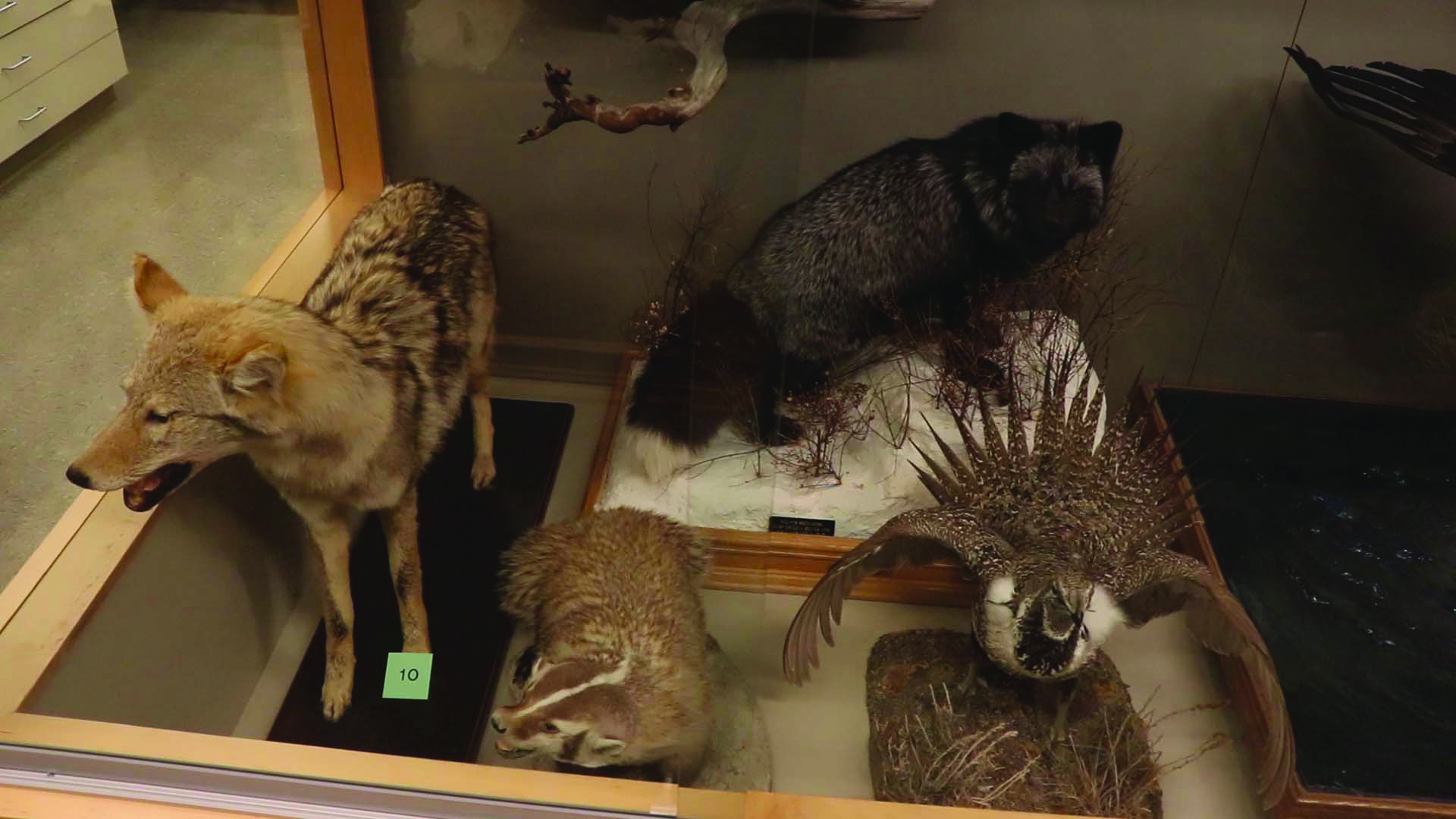Greater sage grouse (front right) alongside other taxidermied animals in the Hubbard Collection Oct. 7, 2021
Alberta is home to a variety of wild plants and animals that require attention before they are lost to extinction.
Twenty-five animals are currently listed on the Government of Alberta’s website as having an at risk status.
Wildlife biologist Everett Hanna says that there is no precise metric when talking about which species is the most threatened.
“You think about things like size of the population, number of places they exist, but also importantly how threatened their habitat is, because for all of the species at risk we have there isn’t one where habitat disappearing is not implicated in some way in their declines.” Hanna said.
Of the species at risk, Hanna says the greater sage-grouse may be in the most danger.
Hanna says breeding sites have become limited for the greater sage-grouse due to loss of their natural habitat, sage.
“They have been used for, in some cases millennia, and have disappeared as a result of cultivation and in some cases disturbance by oil and gas,” he said.
Changes to the environment such as fences may not seem like a problem to most says Hanna.
“Sage grouse once more did not evolve with those types of obstacles really in their sight lines. And they fly into fences and kill themselves accidentally,” Hanna said.
Sage grouse aren’t the only ones facing habitat loss. At risk amphibians are in trouble due to development and other disturbances says ecosystem management student Jordan Vos.
“And of course, because most of their populations are really fragmented, they’re losing that connectivity from going from one spot to the next. And that diminishes their populations if one of them is affected,” Vos said.
She says that efforts to save the amphibians are already underway, with Waterton implementing migration crossings for under the roads to prevent the long-toed salamander from being run over and protections for other species going forward as well.
“For the northern leopard frog, there are a couple of introduction programs going on. There were a lot more happening in the early 2000s.” Vos said
Fellow ecosystem management student Ashlyn Herron says it’s difficult to get people to care about the smaller animals right outside their back door.
“It’s easy to get people behind like the big charismatic things like the panda bear and the grizzly bear,” she said.
If some of these lesser-known species are lost Herron says the impact on the environment can be damaging.
“Everything relies on each other. So, you lose something, and it is going to set off this imbalance that people are going to have to keep working to fix,” she said.
Working to get support for these species can be difficult with obstacles in the way of conservation efforts says Hanna.
“One of the big issues with species at risk generally is jurisdictional issues. Our provincial laws apply to provincial lands. And most of our species at risk conservation and habitat is on private lands. And so, there’s a real challenge,” Hanna said.
Hanna says there are examples of landowners with strong conservation ethic, but there can be mixed feelings from some.
Hanna said, “You may have heard the adage of people being afraid of the government taking their land, which frankly doesn’t happen.”
Demonstrating the connections between the habitat and the native species is how have gotten traction with species at risk he says.
For those interested in supporting conservation efforts or finding out more, The Alberta Chapter of the Wildlife Society helps to promote the management and conservation of these at-risk species and the habitats they encompass.

